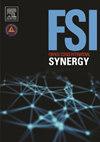技术说明:粘捕器中蝇类(双翅目:蠓科)最佳提取和形态鉴定的溶剂比较
Q1 Social Sciences
引用次数: 0
摘要
在评估具有重要法医意义的苍蝇的定殖模式的研究中,建议使用粘性诱捕器等被动采样技术。然而,目前还没有标准化的方案来对苍蝇进行最佳清除,以确保对物种进行准确的形态鉴定。本研究评估了四种可免费获得的溶剂(矿物油、植物油、婴儿油和橙色溶剂)在促进从粘性诱捕器中提取苍蝇方面的使用情况,以及对随后鉴定三种具有重要法医意义的吹蝇物种(Calliphora vicina、Calliphora vomitoria 和 Lucilia sericata)的潜在影响。结果表明,各物种受油的影响程度不同,但总体而言,橙色溶剂对各物种形态特征的影响最小,因此在整个研究中被认为是最好的溶剂。此外,诱捕器上苍蝇的朝向对形态特征的质量也没有明显影响。建议使用本文概述的橙色溶剂方法来清除粘胶诱捕器上的吹蝇。本文章由计算机程序翻译,如有差异,请以英文原文为准。
Technical Note: A comparison of solvents for optimal extraction and morphological identification of blow flies (Diptera: Calliphoridae) from sticky traps
Passive sampling techniques such as sticky traps are recommended for research studies assessing colonisation patterns of forensically important flies. However, there are no standardised protocols for the optimal removal of flies to ensure accurate morphological identification to species level. This study assessed the use of four freely available solvents (mineral oil, vegetable oil, baby oil and an orange-based solvent) in terms of facilitating extraction from sticky traps, and potential effects on subsequent identification of three blow fly species of forensic importance, Calliphora vicina, Calliphora vomitoria and Lucilia sericata. Results indicated that species were differentially affected by the oils but, overall, the orange-based solvent had the least effect on the morphological features of each species, and therefore, was considered the best throughout the study. Additionally, the orientation of flies on the traps had no significant effect on the quality of morphological characteristics. It is recommended that the orange-based solvent method outlined in this paper is used for the removal of blow flies from sticky traps.
求助全文
通过发布文献求助,成功后即可免费获取论文全文。
去求助
来源期刊

Forensic Science International: Synergy
Social Sciences-Law
CiteScore
4.90
自引率
0.00%
发文量
75
审稿时长
90 days
 求助内容:
求助内容: 应助结果提醒方式:
应助结果提醒方式:


